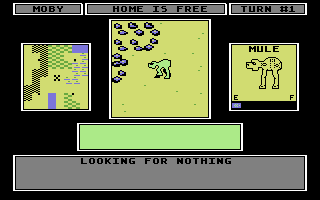Robot Rascals Mac OS
Robot Rascals APPLE II FLOPPY board scavenger hunt strategy family action game Type: Game Platform: AppleII Publisher: Electronic Arts Released: 1986 Media: 5.25 Floppy You will receive the above pictured untested floppy only.No paperwork, box, manual, codes, or anything else. The Mac OS X novelty voice 'Boing' was used for the Robot face (SSF/Splaat) for Klasky Csupo. In one of Boomerang's older blocks Boomeraction, the voice used for the block was a low pitch version of the 'Trinoids' novelty voice. In the Venture Bros episode 'All This and Gargantua-2', the voice is used for the robots on the titular space station.
What is ROS?
The Robot Operating System (ROS) is a set of software libraries and tools that help you build robot applications. From drivers to state-of-the-art algorithms, and with powerful developer tools, ROS has what you need for your next robotics project. And it's all open source.
Read MoreROS in Education
ROS is used by students of all ages, from kids interacting with robots in museum exhibits to graduate students learning about the latest solutions to common robotics problems. Because it supports such a wide variety of robots, including low-cost platforms like the TurtleBot and LEGO Mindstorms, ROS is especially well-suited to classroom use.
Read More

Proceed with board specific instructions. When the Arduino Software (IDE) is properly installed you can go back to the Getting Started Home and choose your board from the list on the right of the page. Last revision 2016/08/09 by SM. With the automation, Mac users can ask a chatbot for a digest of their unread Slack channels. They can customize the digest with respect to channels, number of reactions, comments, etc. In the background, an unattended robot pulls together a summary for the user with all.
In image template-based desktop automation, you provide the robot with screenshots of the parts of the interface that it needs to interact with, like a button or input field. The images are saved together with your automation code. The robot will compare the image to what is currently displayed on the screen and find its target.
Cross-platform desktop automation library
Robocorp provides cross-platform desktop automation support with the RPA.Desktop library. It works on Windows, Linux, and macOS.
Travel directions robot
This example robot demonstrates the use of image templates and keyboard shortcuts to find travel directions between two random locations on Earth.
The robot:
- Interacts with a web browser to select two random locations on Earth (from https://www.randomlists.com/random-location).
- Tries to find the directions using the Maps desktop app on macOS (Big Sur), using image templates and keyboard shortcuts.
- Falls back on the web version of Google Maps if Maps fails to find directions.
Note: This robot requires macOS Big Sur. The layout and the behavior of the Maps app vary between macOS releases. macOS will ask for permissions the first time you run the robot. Go to System Preferences ->Security & Privacy and check Robocorp Lab, Code, or Terminal (depending on where you run the robot from) in the Accessibility and Screen Recording sections.
Another important topic:
System settings can impact the recognition of the images: How the interface elements look on a screen depends on system settings like color schemes, transparency, and system fonts. Images taken on a system might end up looking different than the target system, and the robot might not recognize them, stopping the process.
In this case, macOS should use the 'Dark' appearance under System Preferences ->General. See our Desktop automation page for more information.
The settings
The robot uses three libraries to automate the task. Finally, it will close all the browsers it happened to open.
The task: Find travel directions between two random locations
Variables
Keyword: Get random locations
The robot uses a web browser to scrape and return two random locations from a suitable website.
Keyword: Open the Maps app
The robot opens the Maps app using the Run Process keyword from the Process library. It executes the open -a Maps command. You can run the same command in your terminal to see what happens!
The robot knows when the Maps app is open by waiting for the Maps.MapModeimage template to return a match.
Keyword: Maximize the window
The robot maximizes the Maps app window using a keyboard shortcut unless the app is already maximized. The Run Keyword If is used for conditional execution.
The robot knows the Maps app is maximized when the Desktop.WindowControls image template does not return a match (when the close/minimize/maximize icons are not anywhere on the screen).
Keyword: Open and reset the directions view
The robot sets the directions view in the Maps app to a known starting state (empty from and to locations).
- Conditional execution is used to handle the possible states for the view (it might or might not be open already).
- Image templates are used to wait for specific app states so that the robot knows when something has been completed.
- Keyboard shortcuts are used to toggle the directions view.
Robot Rascals Mac Os Download
Keyword: Accept Google consent
Keyword: View directions using Google Maps
The robot waits until Google Maps has loaded the directions and takes a full web page screenshot.
Keyword: Enter location
Robot Rascals Mac Os X
The robot needs to input the from and to locations. This keyword provides a generic way to target those elements on the UI.
Keyword: View directions
The robot tries to find the directions using the Maps app. If that fails, the robot gets the directions from Google Maps.
Summary
- Image template matching is a cross-platform way to find and target UI elements.
- Keyboard shortcuts are the preferred way to interact with desktop applications (the shortcuts are usually more stable and predictable than the UI).
- Conditional logic can be used to select different actions based on the state of the application.